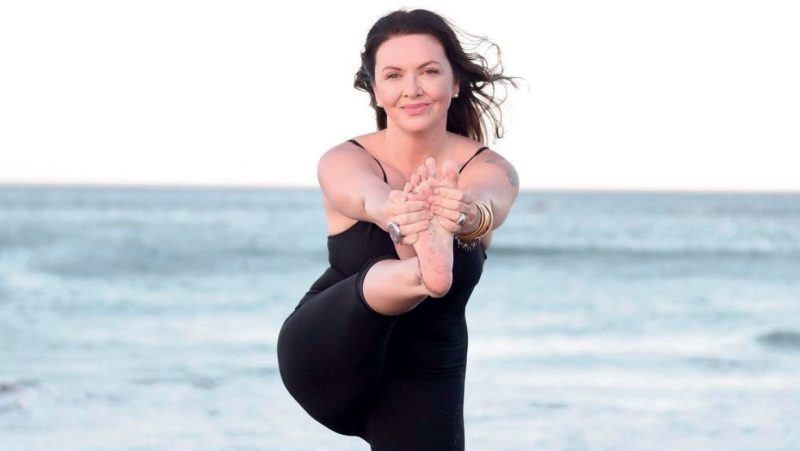
Three Ways Yoga supported Academic Study
How My Practice Supported Academic Study and Personal Growth - By Hannah Comer
Reading time: 3 minutes
In 2023, I qualified as a yoga teacher, something which I had felt called to do as my own personal practice grew and developed. Throughout the deeply personal experience of teacher training, and like other practitioners, I came to reflect on the ways that yoga had helped me, both on and off the mat, and how it had expanded my awareness. Having come from a more academic background, I begun to reflect on the ways that yoga had supported me during that period of study.
In 2018, during my second year of PhD study, my friend invited me to attend a yoga class with her. I went along with her to a Hatha yoga class, which was at a more intermediate level, and although slightly bewildered at everyone following the sequences so easily and at their levels of flexibility, I really enjoyed it and was hooked.
I went along each week. As my practice deepened, I went back to the beginning, and became a beginner, learning and researching each pose and its alignment. Approaching my final year of study in 2020, during the Covid-19 lockdowns, my personal yoga practice expanded, incorporating more of the eight limbs of yoga alongside my asana practice, which included meditation, pranayama and philosophy. Whilst there are numerous studies about the impact of yoga for students’ mental health, here are three personal ways that I found that my consistent yoga practice supported my studies:
- Improved Concentration and Focus.
The physical postures or asana practice helps to prepare the mind and body for meditation*, or stillness, bringing attention to the present moment, and cultivating Dharana and Dhyana, two of the eight limbs of yoga. Both Dharana and Dhyana are states of concentration, often described as a meditative practice; Dharana allows single-focus, directed upon one thing, consciously bringing the mind back to the aim when it wanders, without judgement or comparison, whereas Dhyana is when the act of concentration becomes so completely unwavering that the person has entered a state of meditation, becoming fully immersed in the action or task. In The Heart of Yoga, T. K. V. Desikachar gives the example of a student, with an idea, sitting down to write a paper, and beginning to concentrate as entering the state of Dharana.
When the student really gets involved in the effort to understand the subject and put it down on paper, it then transitions into a state of Dhyana.[1] As outlined by Desikachar, and as a student, I found that by cultivating mindfulness, I became more aware of any distractions around me and my working patterns. As such, I noticed that my concentration and focus improved, as did my ability to bring my attention back to the task at hand whenever my mind wandered. I could then lessen distractions or intentionally remove them in order to become more fully immersed with my work.
- Increased Self-Confidence and Self-Esteem.
When I started my PhD research, there was lots of talk about imposter syndrome amongst researchers. Often this sense of imposter syndrome could be linked to feelings of a lack of self-confidence and self-esteem in relation to the role of researcher; self-confidence in trusting your own abilities, skills and knowledge, and self-esteem, referring to how much you value yourself and your contributions.
For myself, my consistent yoga practice, through enhancing my physical fitness and fostering mindfulness, boosted my sense of both self-confidence and self-esteem. As my yoga capabilities and postures grew, as did my sense of confidence and esteem, improving my posture and how I held myself. Working with postures and meditations which stimulate energy centres, for example, poses such as Warrior I, II and III, which connect with the Manipura (Solar Plexus) chakra, connected to my sense of inner strength and confidence (both on and off the mat).
Fostering mindfulness, especially, for me, through meditation, supported my mental health, helping to provide clarity of mind and relieve stress and overthinking, again, boosting my self-confidence and self-esteem.
- A Sense of Wellbeing.
Continuing from the second point, my yoga practice, through cultivating a connection between my mind, body and spirit, has expanded my self-awareness. With consistent practice, I began prioritising my own wellbeing, becoming more intentional with taking time to look after myself and unwind from the pressures of intensive study and other responsibilities. I also realised that I needed to purposely take time out for movement or exercise and a space for stillness and reflection.
With this sense of wellbeing, I started noticing how I responded to certain situations. For example, before presenting a paper at a conference, the nerves would kick in. I would notice how I was breathing based on how I was feeling and could use my pranayama practice to lessen the feelings of anxiousness and nervousness through breathing techniques, such as long deep breathing or box/ counted breathing, which promote the calming of the nervous system and help to alter a person’s energy.
The three points above are by no means the only ways that yoga can support study, and each person’s practice is unique and personal. I still continue to practice or incorporate these practices into my everyday life, both on and off the mat, and they are always evolving. Whilst yoga helped support my academic study, the study and practice of yoga has taught me that we are always students, constantly learning and growing.
[1] T. K. V. Desikachar, The Heart of Yoga: Developing a Personal Practice, (Vermont: Inner Traditions International 1995), pp.113-114.
*commission earned from this link.





